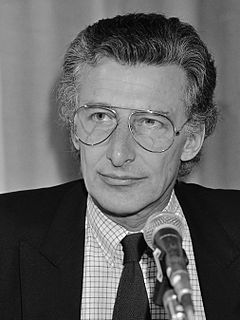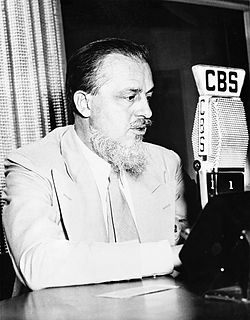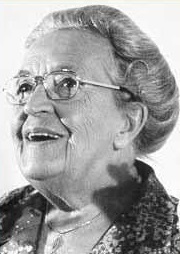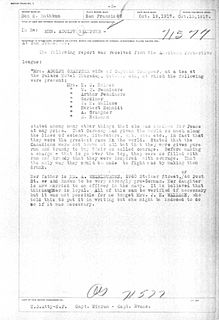Spy fiction, a genre of literature involving espionage as an important context or plot device, emerged in the early twentieth century, inspired by rivalries and intrigues between the major powers, and the establishment of modern intelligence agencies. It was given new impetus by the development of fascism and communism in the lead-up to World War II, continued to develop during the Cold War, and received a fresh impetus from the emergence of rogue states, international criminal organizations, global terrorist networks, maritime piracy and technological sabotage and espionage as potent threats to Western societies. As a genre, spy fiction is thematically related to the novel of adventure, the thriller and the politico-military thriller.

William Somerset Maugham was an English playwright, novelist, and short-story writer. He was among the most popular writers of his era and reputedly the highest-paid author during the 1930s.

Ian Lancaster Fleming was a British writer, journalist and naval intelligence officer who is best known for his James Bond series of spy novels. Fleming came from a wealthy family connected to the merchant bank Robert Fleming & Co., and his father was the Member of Parliament (MP) for Henley from 1910 until his death on the Western Front in 1917. Educated at Eton, Sandhurst, and, briefly, the universities of Munich and Geneva, Fleming moved through several jobs before he started writing.

Erich Maria Remarque was a German novelist. His landmark novel Im Westen nichts Neues (1928), about the German military experience of World War I, was an international best-seller which created a new literary genre, and was adapted into a film in 1930.

Harry Kurt Victor Mulisch was a Dutch writer. He wrote more than 80 novels, plays, essays, poems, and philosophical reflections. Mulisch's works have been translated into over thirty languages.

Rex Todhunter Stout was an American writer noted for his detective fiction. His best-known characters are the detective Nero Wolfe and his assistant Archie Goodwin, who were featured in 33 novels and 39 novellas between 1934 and 1975.

The Spy Who Came in from the Cold is a 1963 Cold War spy novel by the British author John le Carré. It depicts Alec Leamas, a British agent, being sent to East Germany as a faux defector to sow disinformation about a powerful East German intelligence officer. It serves as a sequel to le Carré's previous novels Call for the Dead and A Murder of Quality, which also featured the fictitious British intelligence organization, "The Circus", and its agents George Smiley and Peter Guillam.

Sir Mansfield George Smith-Cumming was a British naval officer and the first director of the Secret Intelligence Service (SIS).
A secret history is a revisionist interpretation of either fictional or real history which is claimed to have been deliberately suppressed, forgotten, or ignored by established scholars. "Secret history" is also used to describe an alternative interpretation of documented facts which portrays a drastically different motivation or history from established historical events.

Sidney George Reilly —known as "Ace of Spies"—was a Russian-born adventurer and secret agent employed by Scotland Yard's Special Branch and later by the Foreign Section of the British Secret Service Bureau, the precursor to the modern British Secret Intelligence Service (MI6/SIS). He is alleged to have spied for at least four different great powers, and documentary evidence indicates that he was involved in espionage activities in 1890s London among Russian émigré circles, in Manchuria on the eve of the Russo-Japanese War (1904–05), and in an abortive 1918 coup d'état against Vladimir Lenin's Bolshevik government in Moscow.

Cornelia Arnolda Johanna "Corrie" ten Boom was a Dutch watchmaker and later a Christian writer and public speaker, who worked with her father, Casper ten Boom, her sister Betsie ten Boom and other family members to help many Jewish people escape from the Nazis during the Holocaust in World War II by hiding them in her home. She believed her actions were following the will of God. They were caught, and she was arrested and sent to the Ravensbrück concentration camp. Her most famous book, The Hiding Place, is a biography that recounts the story of her family's efforts and how she found and shared hope in God while she was imprisoned at the concentration camp.

Ethel Lilian Voynich, néeBoole was an Irish-born British novelist and musician, and a supporter of several revolutionary causes. She was born in Cork, but grew up in Lancashire, England. Voynich was a significant figure, not only on the late Victorian literary scene, but also in Russian émigré circles. She is best known for her novel The Gadfly, which became hugely popular in her lifetime, especially in Russia.

The American Protective League (1917-1919) was an organization of private citizens that worked with Federal law enforcement agencies during the World War I era to identify suspected German sympathizers and to counteract the activities of radicals, anarchists, anti-war activists, and left-wing labor and political organizations. At its zenith, the APL claimed 250,000 members in 600 cities.

The Gadfly is a novel by Irish-born British writer Ethel Voynich, published in 1897, set in 1840s Italy under the dominance of Austria, a time of tumultuous revolt and uprisings. The story centres on the life of the protagonist, Arthur Burton. A thread of a tragic relationship between Arthur and his love, Gemma, simultaneously runs through the story. It is a story of faith, disillusionment, revolution, romance, and heroism.
Matthew John Reilly is an Australian action thriller writer.
The Secret Intelligence Service (SIS), commonly known as MI6, is the foreign intelligence service of the United Kingdom, tasked mainly with the covert overseas collection and analysis of human intelligence in support of the UK's national security. SIS is one of the British intelligence agencies and the Chief of the Secret Intelligence Service ("C") is directly accountable to the Foreign Secretary.
Bryan Edgar Wallace (1904–1971) was a British writer. The son of the writer Edgar Wallace, Bryan was also a writer of crime and mystery novels which were very similar in style to those of his father. He was named after the American politician William Jennings Bryan who his father encountered during a trip to North America.

The Berlin Memorandum, is a 1965 spy novel written by Elleston Trevor. It is the debut novel of the character Quiller, who was ultimately featured in a series of 19 thrillers, until Trevor's death in 1995, having been Trevor's most popular character.

Mysterious Mr. Sabin is a 1898 spy thriller novel by the British writer E. Phillips Oppenheim. It was the first spy novel by Oppenheim, a genre which he came to dominate during the First World War and interwar era. Revolving around a plot of a Frenchman selling British military secrets it became a bestseller, establishing him as a popular writer. It has been described as the novel "that launched Oppenheim's career of xenophobic espionage fantasy". It contains elements of invasion fiction, a common genre theme at the time.

Green Battlefield is a 1943 war thriller novel by the British writer Victor Canning. It was published by Hodder & Stoughton and was the only novel he wrote during his military service in the Royal Artillery. Although comparatively successful, and reprinted in 1944, Canning himself was later dismissive of the novel saying "It was a topical book. I spun it off to cash in on the war story thing. It was quite a competent story, but nothing I’d want in the canon of works!." Nevertheless, it was translated into Italian and French, the first time his work had appeared in those languages.















